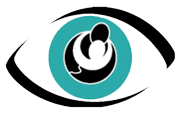Providing support and information to families of children with Dancing Eye Syndrome.

Opsoclonus-myoclonus ataxia syndrome (OMAS) or Dancing Eye Syndrome is a rare autoimmune condition that usually affects young children.
Most children with OMAS are diagnosed at around 18 months of age. OMAS affects one out of every 5 million children worldwide and is slightly more common in girls than boys. In OMAS, a small tumour in the body (called a neuroblastoma) or a viral infection triggers the immune system to attack the nervous system.
The symptoms of OMAS usually begin abruptly and can include rapid, repeated eye movements (opsoclonus or “dancing eyes”), jerking movements (myoclonus), and loss of balance (ataxia). OMAS may be initially diagnosed as acute cerebellar ataxia.
Most patients with OMAS improve with standard immunotherapy treatment, though the relapse rate in children is 50 to 75 percent. Aggressive, early treatment appears to lower the rate of relapse and improve outcomes.
Symptoms
Opsoclonus-myoclonus syndrome symptoms include rapid, repeated eye
movements *(opsoclonus)* and repeated, brief muscle jerks in the arms and
legs *(myoclonus)*.
Please be aware of other *symptoms* such as:
- Loss of balance with inability to sit, stand or walk (ataxia)
- Difficulty with speech
- Sleep problem, specifically insomnia
- behavioural problems such as irritability and rage attacks
- reduced muscle tone hypotonia
- vomiting
In some cases, speech and language may be completely lost. Symptoms of OMAS often start abruptly and can become chronic.
Treatment
Immunotherapy as treatment for opsoclonus-myoclonus syndrome may be recommended.
Immunotherapy is a type of treatment that helps keep the body’s immune system from attacking the brain.
Standard immunotherapy treatment for OMS is started soon after diagnosis and usually continues for at least one to two years.

Treatment Goals
The goal of treatment is a decrease or disappearance (remission) of symptoms. A combination of immunotherapies is typically prescribed and may include a high dose of corticosteroids, intravenous immunoglobulin (IVIg), and rituximab for moderate to severe cases. A doctor may recommend other immunotherapies for milder cases or if the child experiences a relapse.
If the child’s OMAS is caused by a tumour, a doctor may recommend surgery to remove (resect) it. Tumours in young children usually do not require chemotherapy or radiation therapy.
The child may also need physical therapy, speech therapy, or occupational therapy to improve development and long-term prognosis.
Causes
The cause of opsoclonus-myoclonus syndrome can differ by age.
In young children, the cause of OMAS in 50 to 80 percent of cases is a small, benign (not cancerous) tumour of nerve cells called a neuroblastoma or a ganglioneuroblastoma.
The tumour is usually located in the chest or abdomen and is thought to cause the immune system to attack the nervous system.
The origin of the rest of the cases is unknown (idiopathic) or may be caused by tumours that have regressed. Viral infections may also be the cause, especially in older children and teens.
To diagnose OMAS, a doctor will review the child’s medical history and examine their nervous system.
The child may also need an MRI (magnetic resonance imaging) to create two-and three-dimensional images of their brain, as well as imaging to look for a neuroblastoma.
They may test the fluid around the child’s brain and spine (cerebrospinal fluid) for signs of inflammation.
About the dancing eye trust - Established in 1997
The Dancing Eye Syndrome Support Group was formed in 1988 with the principal aim of providing a link for parents of children with this rare disease both locally and nationally. Primarily the Dancing Eye Syndrome Support Trust has been there for families and patients, to provide support,
share knowledge and help one another. This encouragement for parents whose children have been recently diagnosed is invaluable.
The trust also enables support to continue for those with Dancing Eye Syndrome, facilitating an available community for them through their younger years and on their journey into adulthood, and beyond.
Online And In-person Support Group
The online support network is a safe space for parents, families, carers, and those with OMAS to share their experiences, tell their stories, offer medical information, and be involved in this unique rare disease community.
An annual get-together, funded by the trust, allows respite to all who wish to join in.
Raising Awareness
Raising awareness of Opsoclonus Myoclonus Ataxia Syndrome is key; an earlier diagnosis can lead to better outcomes. Specialists, and their kind hearts, are becoming aware, therefore misdiagnosis is steadily improving, but there is still work to do.
Recognising Early Symptoms
A delay in recognising the symptoms, and sadly this is still happening, families are left scared, misunderstood and frustrated. We are working towards this goal, and we team up with OMSLife to host International Conferences in Oxford, Abingdon.
Workshop
The workshop was first introduced by a parent, within this trust, liaising with a specialist OMAS medical doctor, and this legacy continues to engage and welcome leading paediatric neurologists, oncologists and researchers from many countries.
Greater Access To Information
With more access to information to understand this disease, and subsequently how we can then deliver this knowledge to help doctors, children and parents on their journey, is significant, and drives our dedicated volunteers to support this goal.
